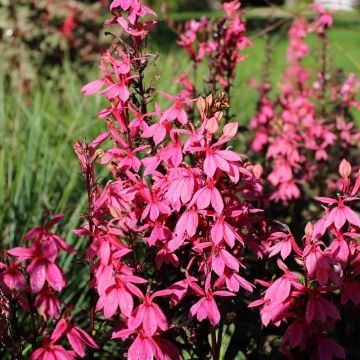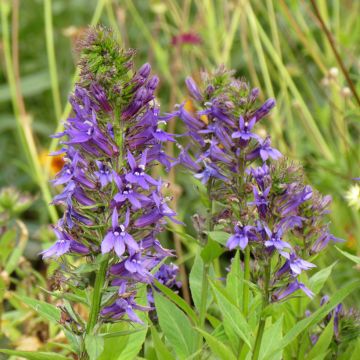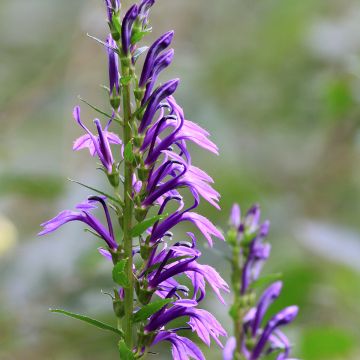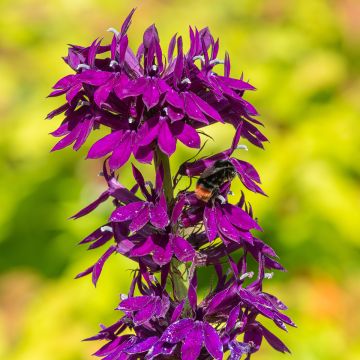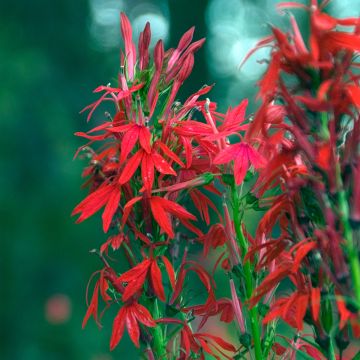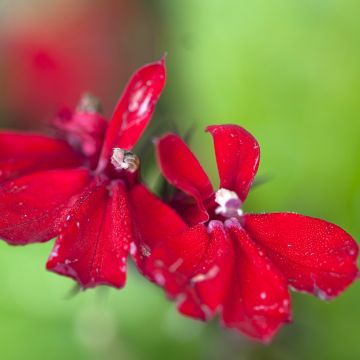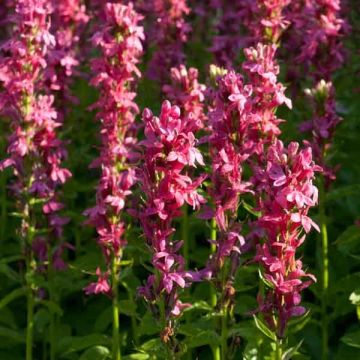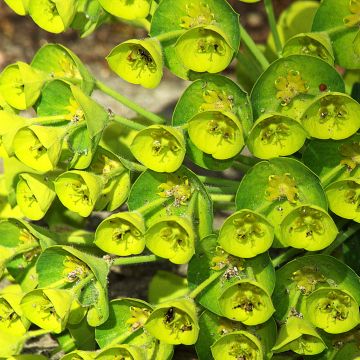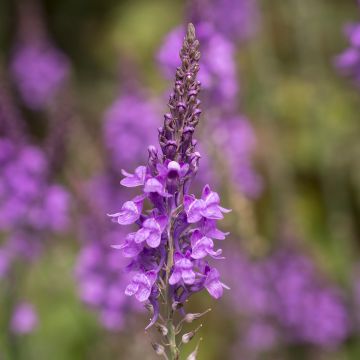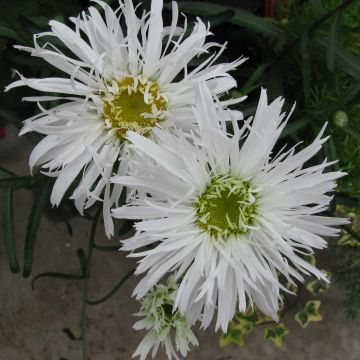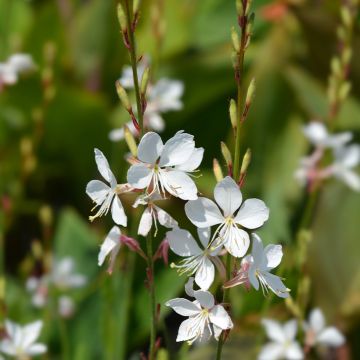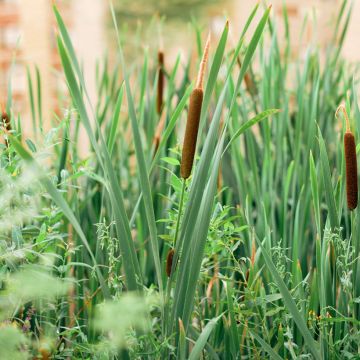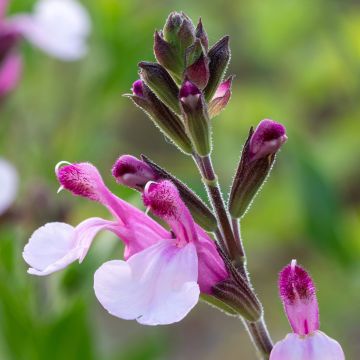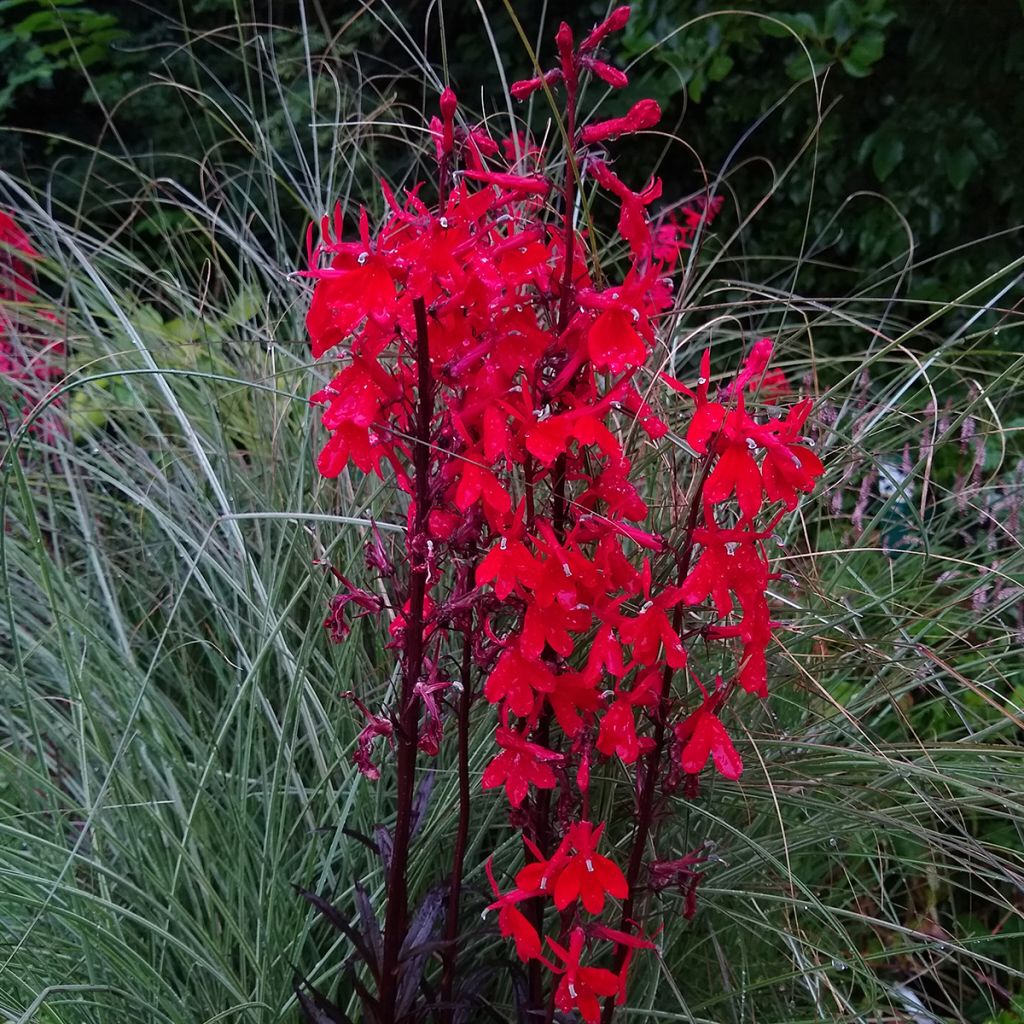

Lobelia fulgens Queen Victoria
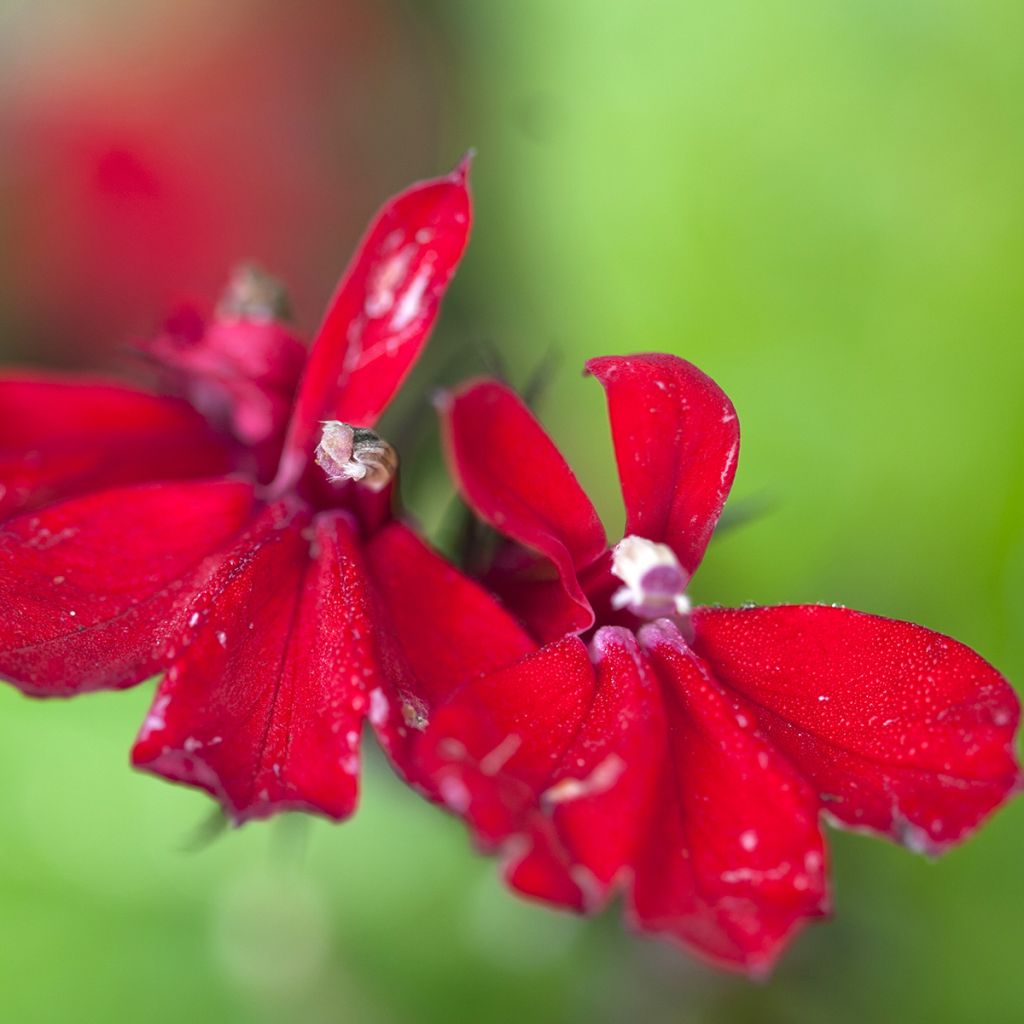

Lobelia fulgens Queen Victoria
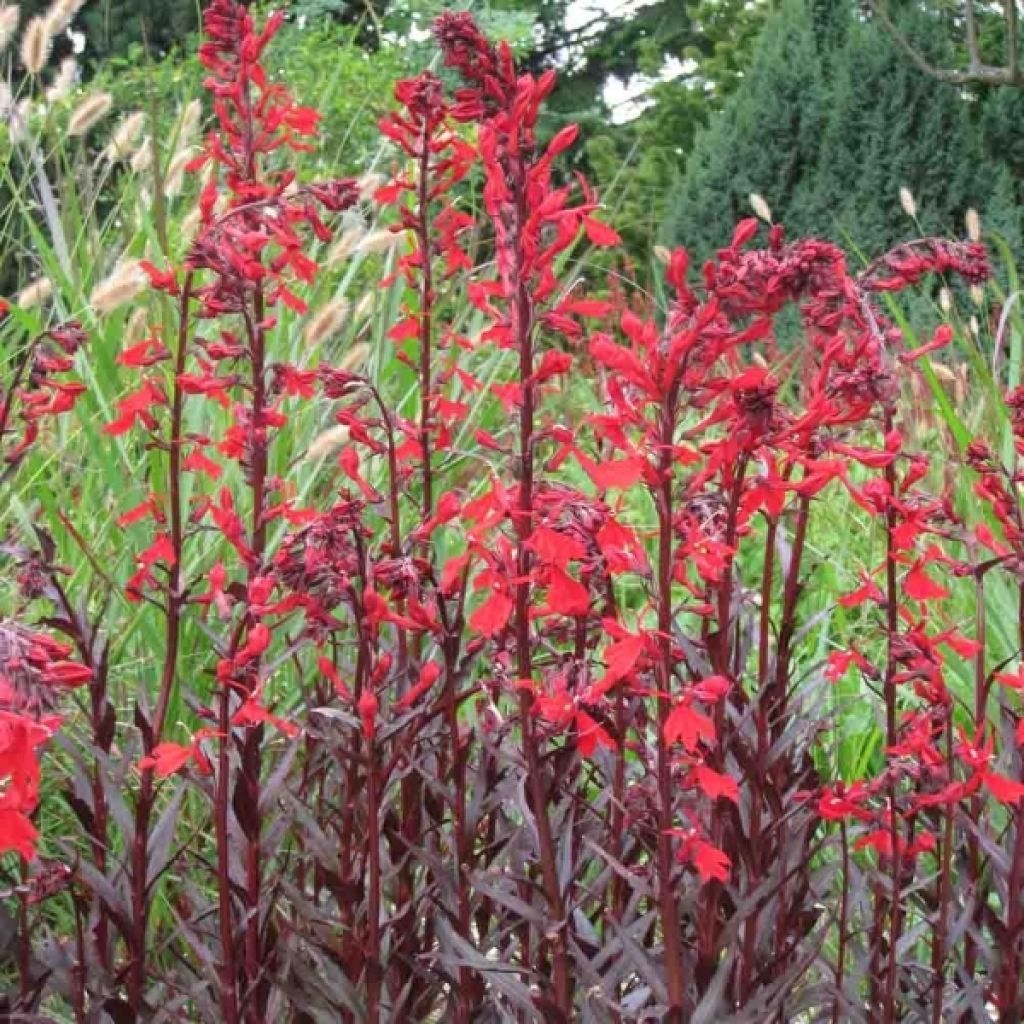

Lobelia fulgens Queen Victoria
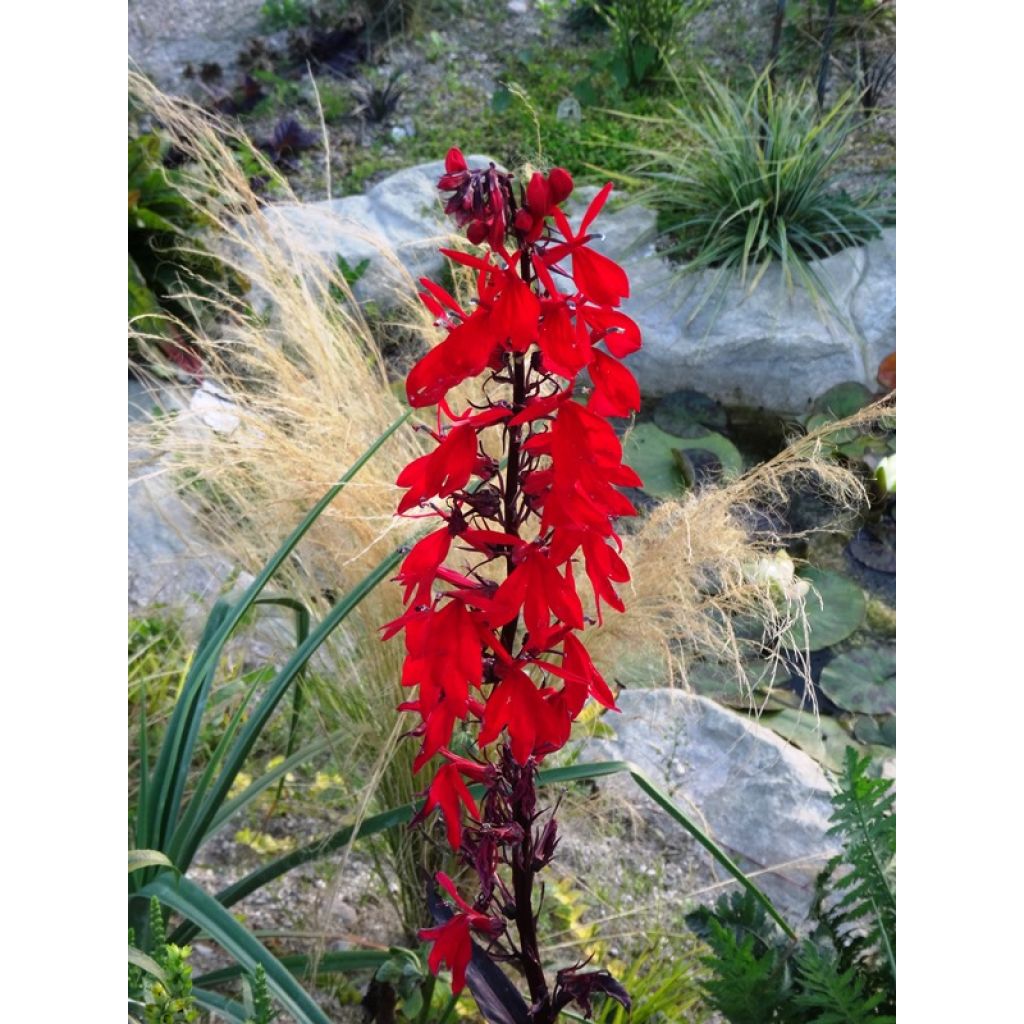

Lobelia fulgens Queen Victoria
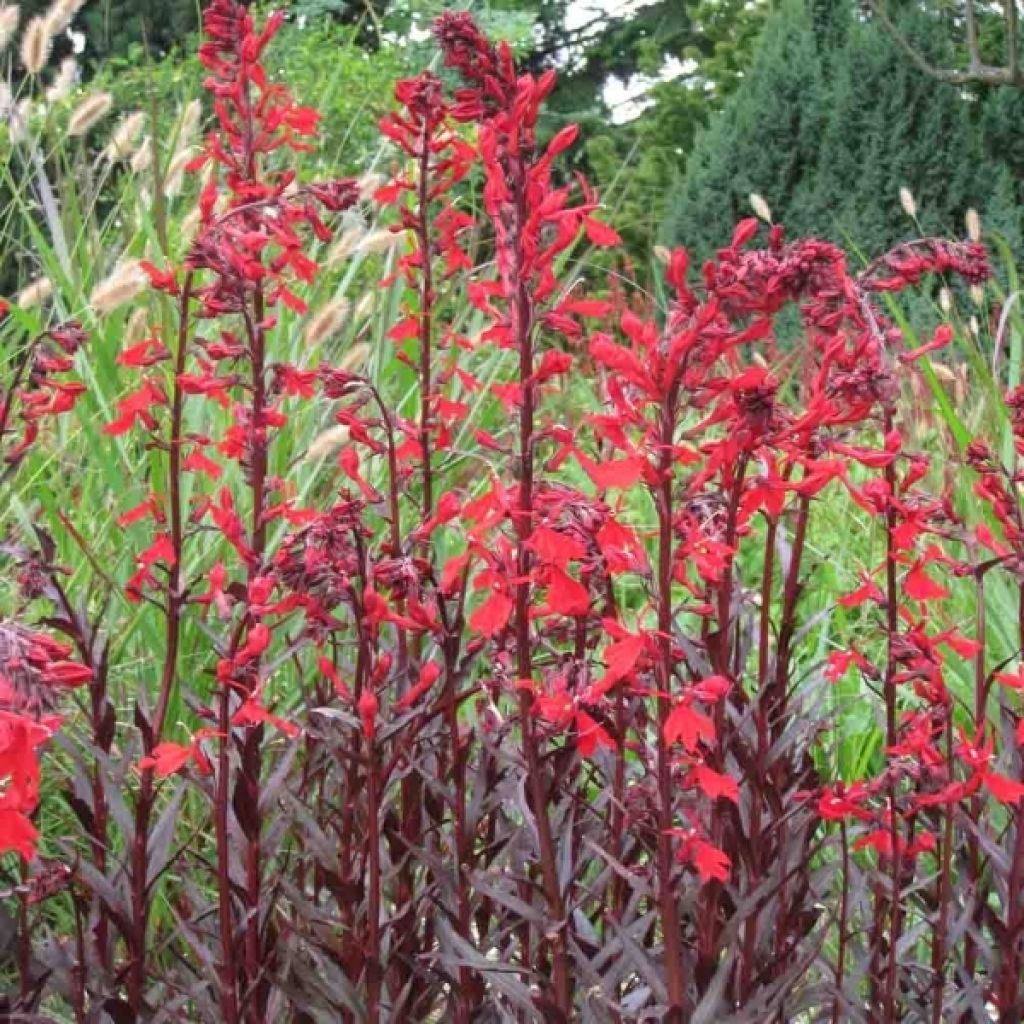

Lobelia fulgens Queen Victoria
Lobelia fulgens Queen Victoria
Lobelia fulgens x cardinalis Queen Victoria
Garden Lobelia, Cardinal Flower
It seems ok but I will have to wait and see in spring to give a proper answer (deciduous foliage in winter).
Stephen, 29/11/2024
This item cannot be shipped to the selected country
Delivery charge from €5.90
Delivery charge from €5.90
More information
Schedule delivery date,
and select date in basket
This plant carries a 12 months recovery warranty
More information
We guarantee the quality of our plants for a full growing cycle, and will replace at our expense any plant that fails to recover under normal climatic and planting conditions.
From €5.90 for pickup delivery and €6.90 for home delivery
Express home delivery from €8.90.
From €5.90 for pickup delivery and €6.90 for home delivery
Express home delivery from €8.90.

Does this plant fit my garden?
Set up your Plantfit profile →
Description
Lobelia cardinalis 'Queen Victoria' is a colourful plant that is not often seen in gardens. Its ancestor originates from the humid and mild climates of southeast USA, but is easier to grow. This beautiful lobelia blazes in late summer, adorned with almost black leaves and tall spikes of scarlet flowers. It is a short-lived perennial plant that will make a sensation near water features, in partially shaded flower beds, and in flowering pots. This moderately hardy plant will complement all the colours of autumn and will pair perfectly with grasses or small blue flowers.
Lobelia fulgens and L. cardinalis, are two closely related species that gave rise to the 'Queen Victoria' cultivar. They belong to the Campanulaceae family. The former is native to Mexico, while the latter is native to the wetlands of southeast USA (Missouri). Both are moderately hardy, especially if the soil is waterlogged in winter. However, during their entire period of growth and flowering, these plants appreciate very moist to wet soils.
In early spring, Lobelia 'Queen Victoria' develops rosettes of lanceolate, linear leaves, 15cm (6in) long, of a magnificent black-purple colour with metallic bronze reflections. Around July-August, brown stems rise, reaching a height of 60 to 80cm (24 to 32in). They are adorned with the same astonishingly dark foliage and will bear flower spikes until late in the season. These flowers, 2.5 to 4cm (1 to 2in) long, are a striking scarlet red and can be seen from afar. They are tubular, have 2 lips, and are arranged in light clusters 15 to 45cm (6 to 18in) long on slightly stiff stems.
It is a very interesting plant for its late and abundant flowering. Lobelia 'Queen Victoria' grows in full sun or partial shade, ideally on the edge of a water feature or in a flower bed with soil that will not dry out. Intense in colour, this perennial pairs perfectly with grasses such as Pennisetum, Stipa, and Carex. The white or pink-flowered Physostegia virginiana, which also enjoys the same moist environments, can accompany this lobelia near water features. In flower beds, this flamboyant lobelia goes well with blue asters and the fabulous autumn colours of Verbena hastata 'Pink Spire'. Create beautiful flowering pots with a perennial geranium with blue flowers and annual lobelias with tiny, incredible blue flowers (Lobelia 'Hot Blue', 'Royal Blue', 'Water Blue'). Growing in a pot means you can protect your Lobelia 'Queen Victoria' from severe frosts while keeping its planting substrate moist.
Report an error about the product description
Lobelia fulgens Queen Victoria in pictures
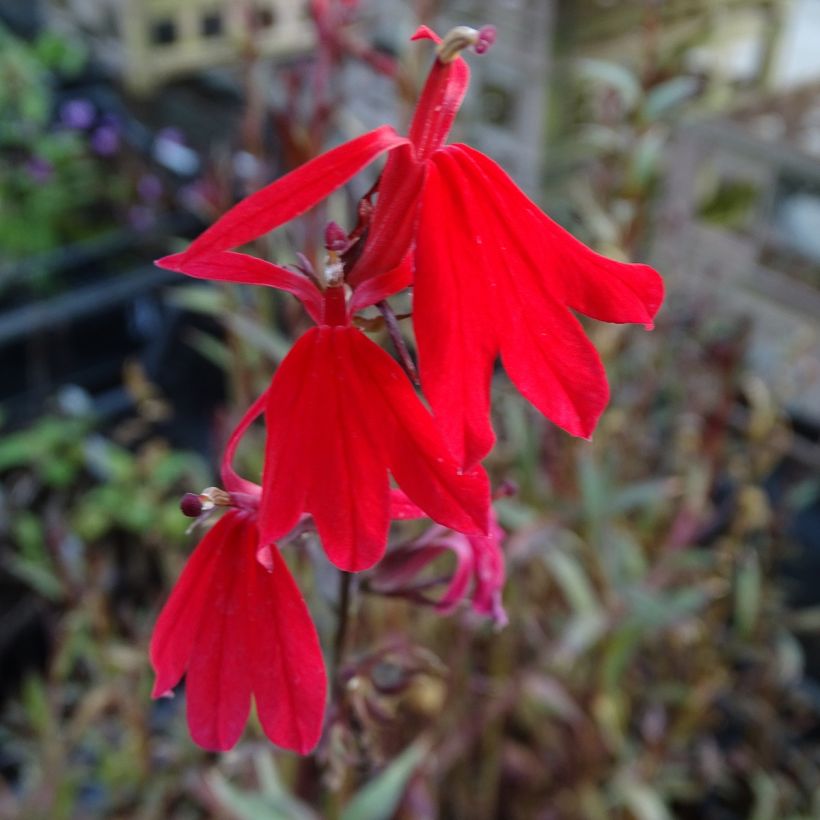

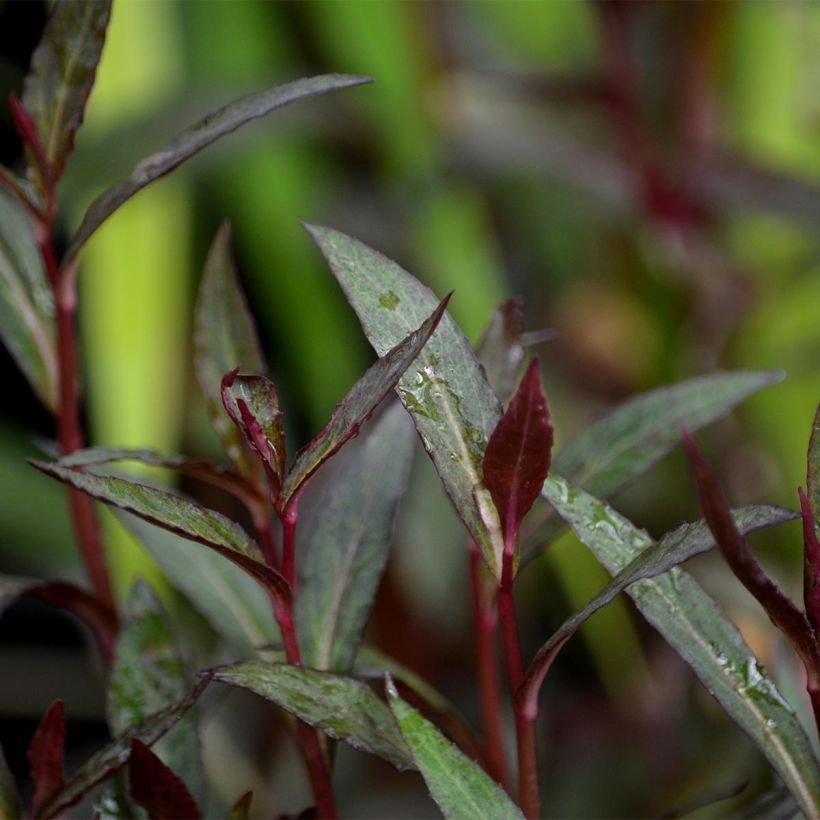

Flowering
Foliage
Plant habit
Botanical data
Lobelia
fulgens x cardinalis
Queen Victoria
Campanulaceae
Garden Lobelia, Cardinal Flower
Cultivar or hybrid
Other Lobelia
Planting and care
Plant Lobelia 'Queen Victoria' in full sun or partial shade, in light, rich soil that remains moist throughout the year. It will particularly thrive on the edge of a pond in regions with mild winters. Avoid planting it in soils that are too chalky or heavy and clayey, compacted and non-draining, as these can be detrimental to its hardiness. In almost dry soil during winter, it is capable of withstanding short frosts of around -10 to -12°C (14 to 10.4°F). Perennial lobelias live a long time in their original position as long as they are divided (in early spring) every 4-5 years.
Planting period
Intended location
Care
-
, onOrder confirmed
Reply from on Promesse de fleurs
Summer flowering perennials
Haven't found what you were looking for?
Hardiness is the lowest winter temperature a plant can endure without suffering serious damage or even dying. However, hardiness is affected by location (a sheltered area, such as a patio), protection (winter cover) and soil type (hardiness is improved by well-drained soil).

Photo Sharing Terms & Conditions
In order to encourage gardeners to interact and share their experiences, Promesse de fleurs offers various media enabling content to be uploaded onto its Site - in particular via the ‘Photo sharing’ module.
The User agrees to refrain from:
- Posting any content that is illegal, prejudicial, insulting, racist, inciteful to hatred, revisionist, contrary to public decency, that infringes on privacy or on the privacy rights of third parties, in particular the publicity rights of persons and goods, intellectual property rights, or the right to privacy.
- Submitting content on behalf of a third party;
- Impersonate the identity of a third party and/or publish any personal information about a third party;
In general, the User undertakes to refrain from any unethical behaviour.
All Content (in particular text, comments, files, images, photos, videos, creative works, etc.), which may be subject to property or intellectual property rights, image or other private rights, shall remain the property of the User, subject to the limited rights granted by the terms of the licence granted by Promesse de fleurs as stated below. Users are at liberty to publish or not to publish such Content on the Site, notably via the ‘Photo Sharing’ facility, and accept that this Content shall be made public and freely accessible, notably on the Internet.
Users further acknowledge, undertake to have ,and guarantee that they hold all necessary rights and permissions to publish such material on the Site, in particular with regard to the legislation in force pertaining to any privacy, property, intellectual property, image, or contractual rights, or rights of any other nature. By publishing such Content on the Site, Users acknowledge accepting full liability as publishers of the Content within the meaning of the law, and grant Promesse de fleurs, free of charge, an inclusive, worldwide licence for the said Content for the entire duration of its publication, including all reproduction, representation, up/downloading, displaying, performing, transmission, and storage rights.
Users also grant permission for their name to be linked to the Content and accept that this link may not always be made available.
By engaging in posting material, Users consent to their Content becoming automatically accessible on the Internet, in particular on other sites and/or blogs and/or web pages of the Promesse de fleurs site, including in particular social pages and the Promesse de fleurs catalogue.
Users may secure the removal of entrusted content free of charge by issuing a simple request via our contact form.
The flowering period indicated on our website applies to countries and regions located in USDA zone 8 (France, the United Kingdom, Ireland, the Netherlands, etc.)
It will vary according to where you live:
- In zones 9 to 10 (Italy, Spain, Greece, etc.), flowering will occur about 2 to 4 weeks earlier.
- In zones 6 to 7 (Germany, Poland, Slovenia, and lower mountainous regions), flowering will be delayed by 2 to 3 weeks.
- In zone 5 (Central Europe, Scandinavia), blooming will be delayed by 3 to 5 weeks.
In temperate climates, pruning of spring-flowering shrubs (forsythia, spireas, etc.) should be done just after flowering.
Pruning of summer-flowering shrubs (Indian Lilac, Perovskia, etc.) can be done in winter or spring.
In cold regions as well as with frost-sensitive plants, avoid pruning too early when severe frosts may still occur.
The planting period indicated on our website applies to countries and regions located in USDA zone 8 (France, United Kingdom, Ireland, Netherlands).
It will vary according to where you live:
- In Mediterranean zones (Marseille, Madrid, Milan, etc.), autumn and winter are the best planting periods.
- In continental zones (Strasbourg, Munich, Vienna, etc.), delay planting by 2 to 3 weeks in spring and bring it forward by 2 to 4 weeks in autumn.
- In mountainous regions (the Alps, Pyrenees, Carpathians, etc.), it is best to plant in late spring (May-June) or late summer (August-September).
The harvesting period indicated on our website applies to countries and regions in USDA zone 8 (France, England, Ireland, the Netherlands).
In colder areas (Scandinavia, Poland, Austria...) fruit and vegetable harvests are likely to be delayed by 3-4 weeks.
In warmer areas (Italy, Spain, Greece, etc.), harvesting will probably take place earlier, depending on weather conditions.
The sowing periods indicated on our website apply to countries and regions within USDA Zone 8 (France, UK, Ireland, Netherlands).
In colder areas (Scandinavia, Poland, Austria...), delay any outdoor sowing by 3-4 weeks, or sow under glass.
In warmer climes (Italy, Spain, Greece, etc.), bring outdoor sowing forward by a few weeks.

































